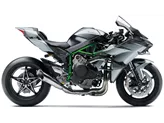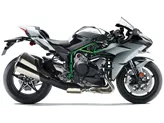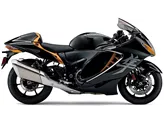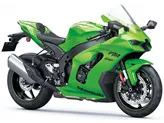Yamaha R1 2010 vs. Kawasaki Ninja H2 R 2015

Yamaha R1 2010

Kawasaki Ninja H2 R 2015
Overview - Yamaha R1 2010 vs Kawasaki Ninja H2 R 2015
The Yamaha R1 model year 2010 and the Kawasaki Ninja H2 R model year 2015 are both supersport motorcycles that offer impressive performance and features.
Starting with the Yamaha R1 2010, it comes equipped with a 998cc engine that delivers 181 horsepower and 115.5 Nm of torque. The engine has a bore of 78 mm and a stroke of 52.2 mm. It features a 4-cylinder configuration with 4 valves per cylinder and DOHC technology. The R1 2010 has an aluminum frame, specifically a Deltabox frame, which provides excellent stability and handling. The front suspension consists of an upside-down telescopic fork, while the front brakes are double disk type. The bike has a wheelbase of 1415 mm and a seat height of 835 mm. It also has a fuel tank capacity of 18 liters.

Yamaha R1 2010
On the other hand, the Kawasaki Ninja H2 R 2015 boasts a more powerful engine with 310 horsepower and 165 Nm of torque. The engine has a displacement of 998cc, a bore of 76 mm, and a stroke of 55 mm. Similar to the Yamaha R1 2010, it has a 4-cylinder configuration with 4 valves per cylinder and DOHC technology. The Ninja H2 R 2015 features a steel frame, specifically a tubular frame, which provides good rigidity and stability. The front suspension consists of a telescopic fork, and the front brakes are also double disk type. It has a slightly longer wheelbase of 1450 mm and a slightly lower seat height of 830 mm. The fuel tank capacity is 17 liters.
In terms of strengths, the Yamaha R1 2010 is praised for its strong engine and sophisticated engine character. It also has an optimal braking system and a comfortable seating position. On the other hand, the Kawasaki Ninja H2 R 2015 is known for its quality of workmanship, power, torque, and traction. It has surprisingly low maintenance requirements considering its 310 horsepower engine. The acceleration of the Ninja H2 R is often described as being out of this world. The engine control is also highly regarded, and the bike features high-quality details in all corners. The paintwork is superb, and the brakes are excellent. The Ninja H2 R also offers great stability in every situation.

Kawasaki Ninja H2 R 2015
However, both motorcycles have their weaknesses. The Yamaha R1 2010 is criticized for its suboptimal suspension elements and slightly weak traction. It also has a relatively high weight. On the other hand, the Kawasaki Ninja H2 R 2015 has some drawbacks such as engine response at the first few degrees of throttle and understeer at high speeds. It also requires higher maintenance than normal bikes due to its high-performance nature. Additionally, the sound of the Ninja H2 R's engine can be polarizing, with some loving it and others finding it problematic on race tracks.
In conclusion, the Yamaha R1 2010 and the Kawasaki Ninja H2 R 2015 are both impressive supersport motorcycles with their own strengths and weaknesses. The Yamaha R1 2010 offers a strong engine and comfortable seating position, while the Kawasaki Ninja H2 R 2015 boasts exceptional power, torque, and traction. Ultimately, the choice between the two will depend on individual preferences and priorities.
Technical Specifications Yamaha R1 2010 compared to Kawasaki Ninja H2 R 2015
Pros and Cons in comparison
Pros and Cons in comparison
Yamaha R1 2010
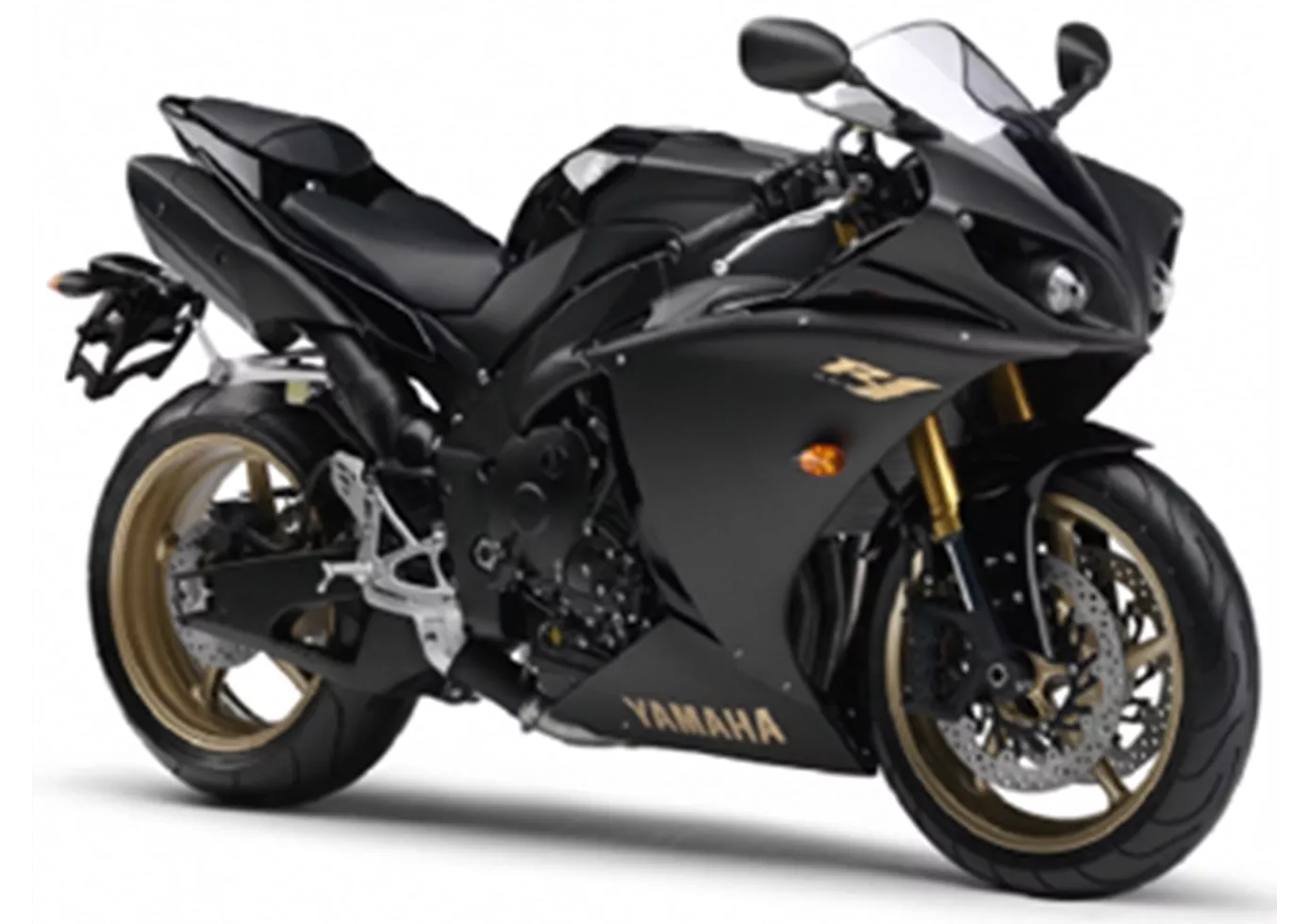
The current engine in the R1 scores points above all with its unmistakable sound, very transparent response and linear power delivery. In terms of peak power, however, Yamaha had to cut back a little.
Kawasaki Ninja H2 R 2015

The Kawasaki crew had a vision. To build a motorbike that creates excitement and pushes into completely new dimensions in terms of performance and technology. This vision has succeeded. The 326 hp machine can be piloted by experienced riders without acute danger to their lives. The intensity of the acceleration is indescribable. But the perfect overall appearance of the motorbike with countless high-quality details is also thrilling. Compared to normal motorbikes, the H2 R has its weaknesses in throttle response and line precision at high speeds. All in all, the H2 R is the most fascinating motorbike of all time for the test pilot and can be recommended to petrol junkies with a clear conscience. The H2 R is available for the price of a well-equipped German-made premium estate - only with "a little" more adrenaline.
Price Comparison Avarage Market Price Yamaha R1 vs Kawasaki Ninja H2 R
There are a few key differences between a Yamaha R1 2010 and a Kawasaki Ninja H2 R 2015. There are the same number of bikes of both models available on the 1000PS.de marketplace, specifically 5. It takes less time to sell a Yamaha R1 with 53 days compared to 2,298 days for a Kawasaki Ninja H2 R. Since model year 2005 1000PS.de editors have written 80 reviews for the Yamaha R1 and 13 reviews for the Kawasaki Ninja H2 R since model year 2015. The first review for the Yamaha R1 was published on 4/28/2003 and now has more than 3,900 views. This compares to more than 413,000 views for the first review on Kawasaki Ninja H2 R published on 11/4/2014.






















